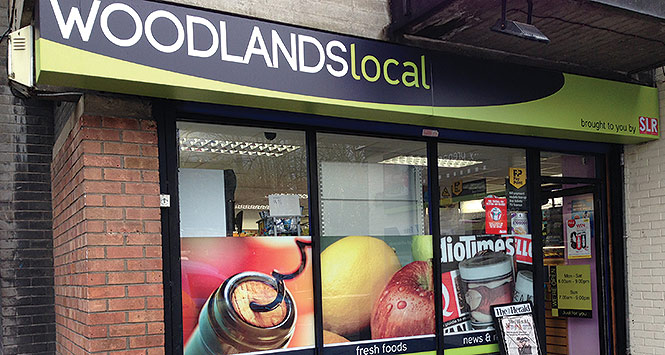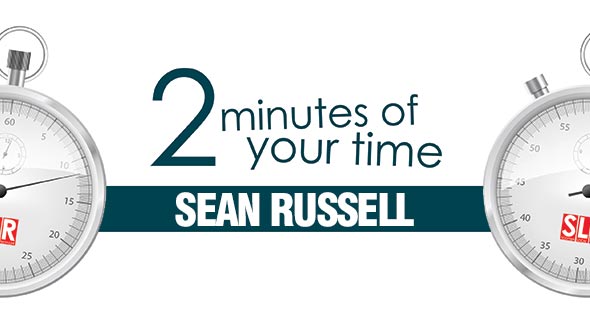Technology has slowly been creeping up on a reluctant convenience industry, but with sound investment in the right tools, retailers can now have a better understanding of their customers than ever before, all of which can lead to a better offer and increased sales.
by Kevin Scott
Recent figures published by industry research firm IGD highlighted that 72% of convenience shop customers had a desire to receive coupons from their local retailer via mobile phone. Furthermore, 68% of shoppers are interested in being notified of promotions via mobile and 55% wanted notified of NPD via the same medium. The short summary of this report is that technology is already changing the way we shop and the time is upon local retailers to begin to engage with their audience in new, effective ways by utilising technology. “Retailers can’t afford to underestimate the digital opportunity,” says Michael Freedman, Shopper Insight Manager at IGD. “It’s happening now and it’s happening fast. 60% of convenience shoppers have smarts phones. 35% have tablets – shoppers want digital engagement.” Through its Shopper Vista research programme IGD examines the attitudes and behaviour of convenience shoppers and the group has been vocal about the need for local retailers to harness the capabilities available to them. Freedman says that retailers shouldn’t just jump on the bandwagon of whatever technology is fashionable, but they should first find out what it is their shoppers will respond to.
“Consumers want practical solutions to make their shopping easier,” he says. “69% would like to be able to compare prices on their phones, for example.” Given the rate of smartphone and tablet adoption across the UK, shoppers are becoming increasingly demanding in what these devices can do for them, helping them find the best deals and the right products. Mobile phones are becoming digital concierges.
This is where the local retailer can step in. Consider that 9% of shoppers use their mobile phones in-store to check if they can get a better price elsewhere. This rises to 25% among those who would like to do it in the future, meaning convenience stores could lose sales even when customers are in-store. Still, for the moment engagement with mobile technology remains low during the shop itself, however it is in the ‘pre-shop’ phase where convenience retailers can target prospective customers. This is technology already being utilised by the multiples, and as has oft been repeated in SLR, the Tescos and Asdas of the world don’t tend to invest in anything that doesn’t increase their sales and expand their profits. Pre-shopping browsing Almost a third of shoppers are using the internet before they go shopping to find which stores are offering the best food and grocery deals – up from 6% in 2010.
The proportion of such savvy ‘online cherry pickers’ rises to 41% in 18-24 year olds, and almost half (48%) in shoppers with children under five. One way to entice customers to use your store is by launching an app. Freedman points to North East Convenience Stores, an English chain of Nisa stores, which has its own app. He explains: “Messages are sent out to customers with promotions only available on the app, or when the customer is near the shop the retailer can send out a message, which lets them know about the offer. It’s about personalisation, the customer thinking ‘they know what I want.’” IGD recently published its annual review of the industry’s most popular apps and one aspect of the latest review was the growing acceptance of using apps among consumers.
The review found that personalised promotional alerts and coupons were popular, while IGD also said that a new generation of price comparison apps is likely to transform the shopping experience – and we’re not talking about shopping for cars of TVs here; consumers are using apps to find out who is selling the cheapest milk .
This ability to target shoppers near the store can help drive loyalty – and don’t worry about appearing to be overstepping the privacy mark, it is very much an opt-in service, and as already highlighted, the majority of customers want targeted this way. For example, says Jason Finch, Director of technology company Hubtill, if a customer stops coming in four times a week and instead comes in three, you might not notice. If they spend a little less each visit, it might not be clear, if they change what they buy there’s a reason for that. “There are ways to get the technology to do the watching for you”, he says. This isn’t Big Brother-style surveillance, but a pain-free method for extracting more information about the buying habits of your customers. After all, visit frequency and what they buy is right in front of you.
As Freedman says: “I might come in for a standard top up shop; bread, milk and eggs but if I then get a message on my phone to tell me about an offer personalised for me, then I’ll be interested in that and suddenly I’m there on multiple missions and spending more money.” transaction times Technology can also help speed up transactions, something that shoppers are increasingly happy to see. Contactless payment, generally on transactions under £20, works by using Near Field Communications. NFC, as it is better known, works by allowing data to be exchanged between devices such as any internet-enabled smartphone or tablet, via short-range wireless signals. It works much in the same way as Bluetooth, but is more secure. “We know that 85% of shoppers use convenience stores,” says Freedman.
“They want that shop to be quick and easy. Mobile contactless payment is. If they can use their phone to pay for their transaction and get out the shop quickly that’s ideal. Self checkouts are one thing, but using the phone as an enabler is another. There’s a great synergy between technology and convenience: technology is convenient. It can help retailers and their customers save time and money.” One company with a drive to do precisely that is Hubtill.
Company founder Jason Finch says that Hubtill aims to increase efficiency both in-store and through the supply chain by improving on-shelf availability and stock management while removing the need for store owners to spend time interpreting EPoS reports. By using artificial intelligence and machine-learning software together with mobile touchscreen hardware, the technology develops an understanding of individual customers’ buying behaviour. By learning who is going to be buying which products and when, retailers are able to predict demand much more accurately. The idea is that this will then increase efficiency of in-store processes and assist with stock replenishment to improve availability and reduce wastage. Finch says: “Up until this point, in-store technology in the convenience sector has been about the stock itself – how much of it is there, how much it costs, how much has been sold. What we want to do is introduce the customer and look at what they’re doing, why they’re buying what they are, and when.” This philosophy is well in-tune with the IGD figures on how customers want that service from retailers. Finch says the thinking behind Hubtill is to look at how general retail responded to the rise of the commercial internet.
“This may sound harsh but the convenience industry is 15 years behind when it comes to digital technology,” he says. “Where stores are now is where general high street retail was in the late 90s. They moved to one-to-one communication, personalised deals and understanding customers as individuals.” So, in essence, this is what convenience retail must also do – because it is what customers expect, and increasingly, it’s what they demand. Finch says the company has been developing the system for a year and are now in trials with a few retailers – people, he says, who don’t have sophisticated retail solutions. “We believe that EPoS alone has a focus that isn’t the best going into the future,” he says. “The important thing is its data of course; it helps retailers understand stock better, but to get the most out of it, the retailer has to have a technical understanding of it and spend a lot of time with it. We want to get a computer to do all that.” But with retailers being at the heart of their local communities there is strong argument that they already know their customers. This is something Finch disputes, to a certain extent.
“You can know a customer, know their name and talk to them, but if I use one of our trials as an example: he said he knew his customers, but he admitted that what he knew of them and what he could know of them were very different.” What this boils down to is data capture – in a rudimentary form retailers have been doing this for years – Tam comes in every morning and buys a copy of The Sun, two rolls and a bag of crisps for later.
What local retailers don’t tend to do is use this information – to stick with our example, if a retailer notices a customer buys a pizza every Saturday night along with their lottery ticket, they might offer them a free garlic bread. The customer would be understandably delighted, that would breed loyalty and the following week the retailer might find themselves selling an extra garlic bread.
This understanding can be used on a very complex level and this year Finch predicts there will be more focus on understanding consumers, something he hopes retailers will welcome. His big tip is to collect email addresses. “C-stores need to gather more email addresses, with permission, then you own your marketing list and can do things with that.” This is the first step to being able to offer sophisticated personalised communication that goes far beyond the scope of social media. That said, social media channels offer retailers a starting point. Having a Facebook page or a Twitter feed can work wonders for driving up awareness of the store, but as Finch says, no store should feel like they have to resort to something they’re not happy with just because they feel pressurised.
“Retailers should do only what works for them. Click + Collect is a great way to drive footfall but if most of your trade is transient for example, it might not be for you. It’s the same with something like Facebook – there’s so much demand for everyone to have a Facebook page, but if you’re only one store and not Tesco or even Spar, then it might not be work for you.” make or break time Mobile payment entrepreneur Dan Wagner says it’s now make or break for retailers needing to leverage online-style technologies to survive. He comments: “Smartphones are becoming the focus for customer engagement with shops, and retailers should be employing mobile app technologies to improve the customer experience and transforming their premises into data-rich browsing environments.
For example, low-energy Bluetooth beacons can be strategically placed around stores, messaging shoppers as they approach special offers. In this way shopping becomes a more interactive and personalised experience. The technology also has the additional bonus of adding value by retaining behavioural data.” Taking a different approach to this is payment technology company NCR. Its Convenience Go package, which has been launched in North America, allows customers great flexibility and personalisation when they are shopping. An ideal solution for convenience operators, the technology allows customers to self-scan items on their mobile, pay through their secure ‘mobile wallet’ and be sent an e-receipt. Joel Miller, Senior Product Manager at NCR says the idea came from building upon mobile payments to find a wider consumer solution.
“It’s an ideal in-store experience similar to what a customer would get online – quick and personalised, exactly what would be expected from an online transaction.” NCR also has a package called Pulse Real-Time, which is a real time EPoS system that allows retailers to remotely analyse their operations, including sales by hour and category performance. Orders can be made, employees’ tracked and much more besides. For any retailer looking to embrace technology, it’s advisable to spend time browsing what’s available – both in budgetary terms, and in what way it will benefit you. Some technologies will naturally acquire more adoption due to better marketing or sales practices, but for the individual local retailer, it’s about being comfortable. Freedman says: “It’s early days for the whole market, even online shopping is still relatively new,” he says. “Technology like this is embryonic so it’s about finding out what will work, what the customer will want. Don’t rush in – try things out, ask yourself, does this solve a problem? You have to know it’s not just a gimmick.”
The message is that technology is encroaching into convenience retail quicker than ever before. Supermarkets are becoming more sophisticated in how they understand shoppers and more high street retailers are targeting customers with personalised offers. This is the future, it is what shoppers demand. It’s time to make it start working for you.
Case Study: Starbucks app
Starbucks may be a global giant with the resource to invest in cutting edge technology, but by examining how the coffee company’s app works retailers can see just how powerful and practical mobile technology can be. Available for Apple and Android, the app is a very simple and efficient way for customers to pay for their coffee every morning without having to remember to carry cash or visit the ATM. They simply register their credit card details once then using a simple two-click process they can add credit to the app as required. Through a signal from the shopper’s mobile phone, the app even recognises when the shopper walks into the store and automatically brings up the QR code onto the shopper’s smartphone home screen, ready to be scanned by the tillpoint scanner. Efficient, slick and quicker than card payments, it’s easy to see how the technology could be put to use in a local retailing outlet. Branded up with your own store imagery or fascia group imagery, retailers could encourage shoppers to make use of the app as a payment solution. There is clearly great potential to use it to drive up footfall and basket spend as shoppers’ spend is no longer limited by the cash they have in their pocket. Of equal interest to retailers will be the data capture possibilities that the technology opens up. By allowing all transactions done through the app to be tagged to an individual shopper, the technology opens up many doors for retailers to get a much better understanding of the shopping patterns of every customer using the app: what they buy, when they visit the store, which categories they buy into, whether they buy on promotions and much more.
Technical possibilities
Technology is ready to change convenience retailing forever. Here are a few innovations already being rolled out that could separate your store from the competition. You can see examples of this kind of technology at work by visiting SLR’s video-only website www.shopflix.tv. Digital displays: Simple, but effective. By using digital displays (in essence, LCD monitors hooked up to the office PC) you can highlight offers, promotions, events and change with far greater frequency than posters. Electronic shelf edge labels: This technology may be in its infancy, but it gives retailers huge flexibility on pricing. Day-part pricing can be introduced – prices can be changed when events such as this summer’s World Cup or Commonwelth Games are on for example. QR codes: An often maligned technology, it’s easy to create QR codes and by sticking them on local products, customers could scan the product to learn more about its provenance. All this brings the shopper closer to the retailer and the supplier. Bluetooth Beacons: Small sensors which can be installed throughout your store, or even outside it. When a customer with a Bluetooth enabled device walks past they are sent messages – which could be exclusive promotions, deal of the day offers, or a reminder of an upcoming event.
For further information IGD’s Michael Freedman will be presenting the firm’s insight into the convenience sector at the Symbol Groups 2014 on 22nd May in London. Visit www.igd.com/symbolgroups2014 for more. For more information on Hubtill visit www.hubtill.com Further information on some of the technology featured in this article can be found at www.shopflix.tv






